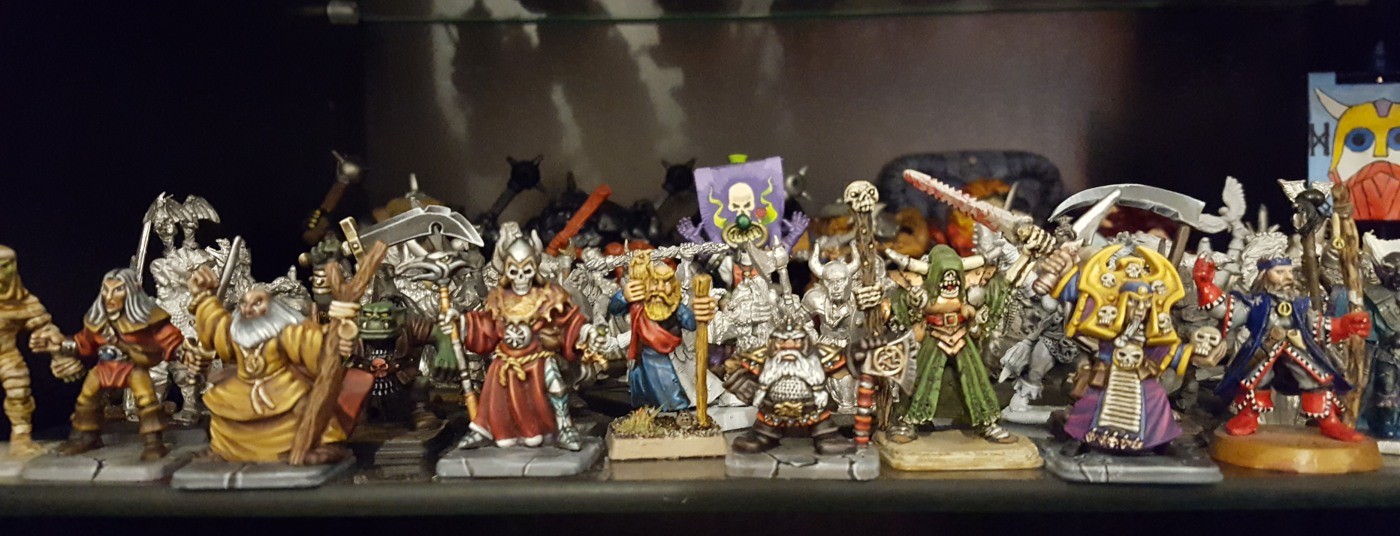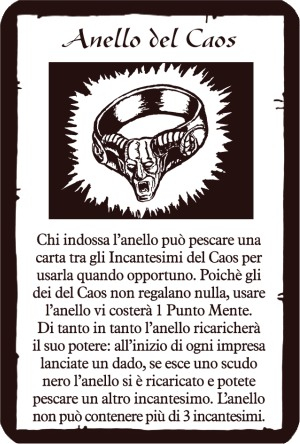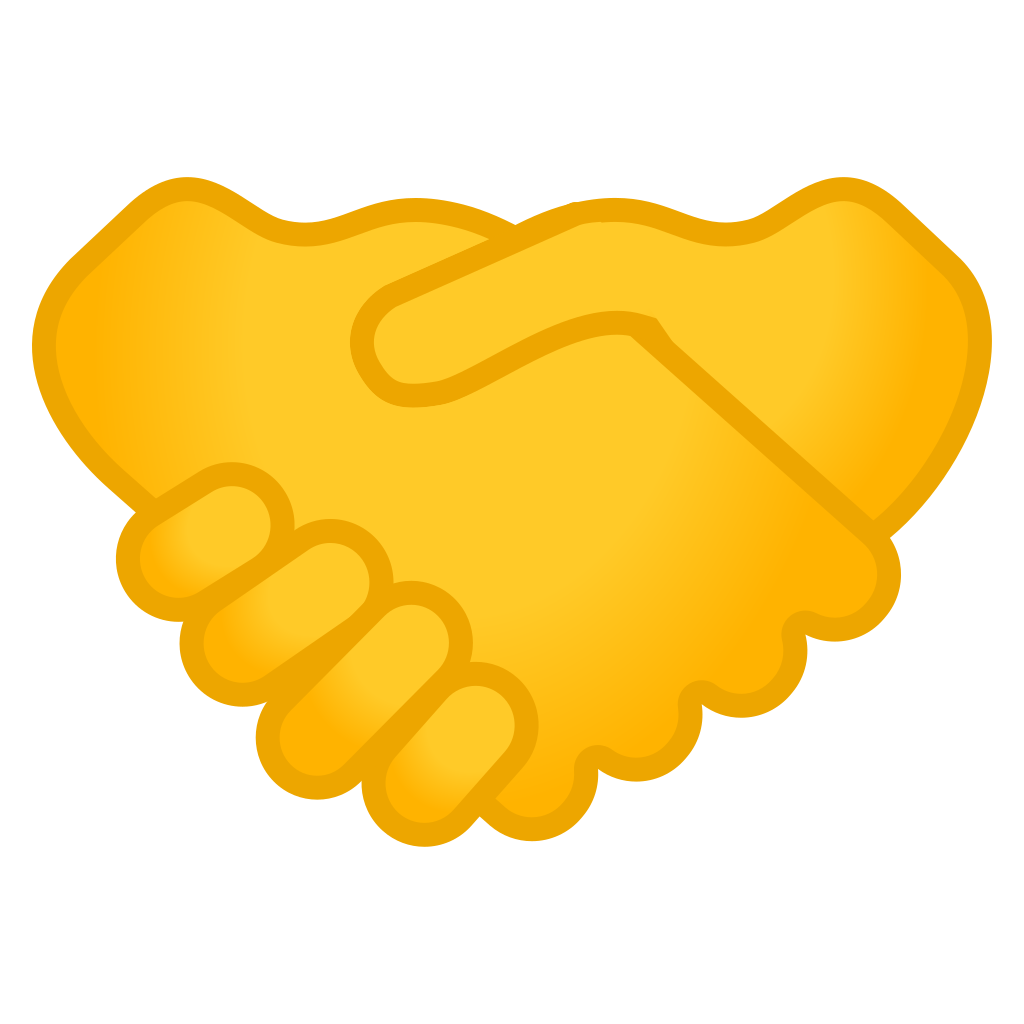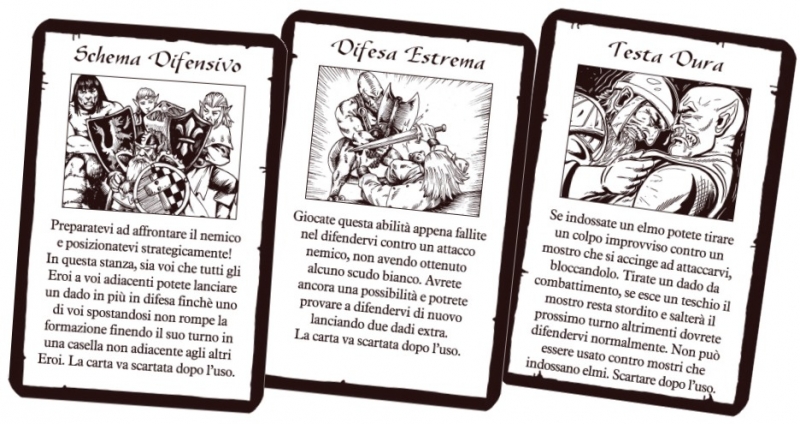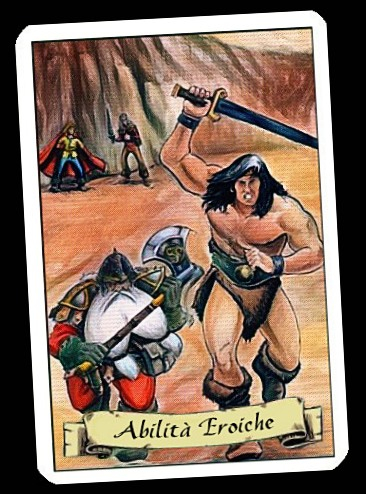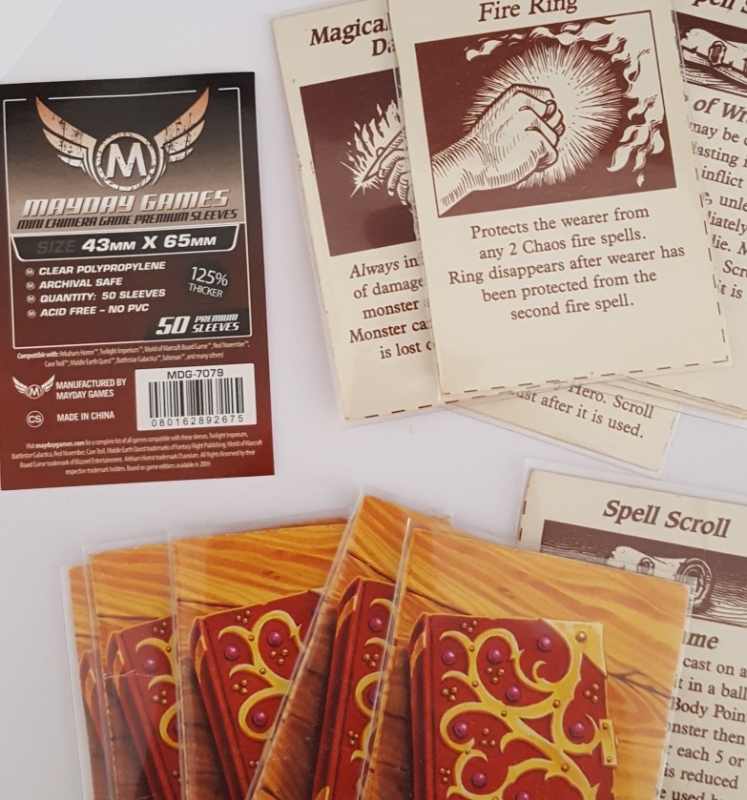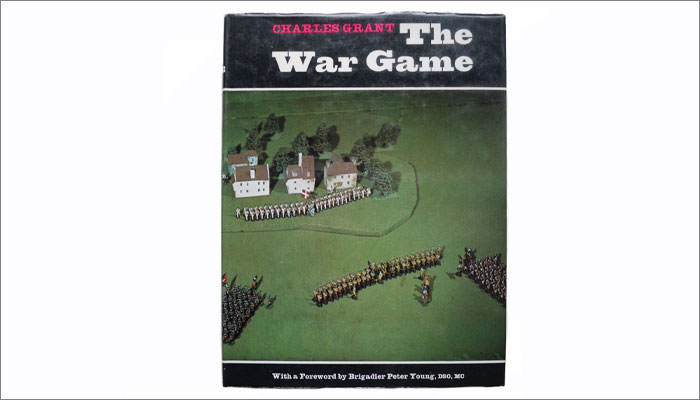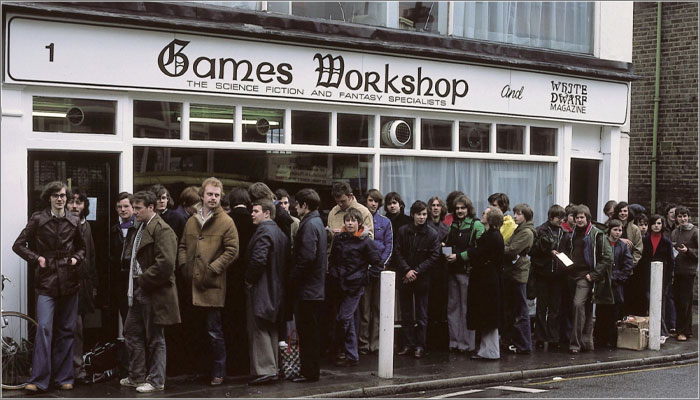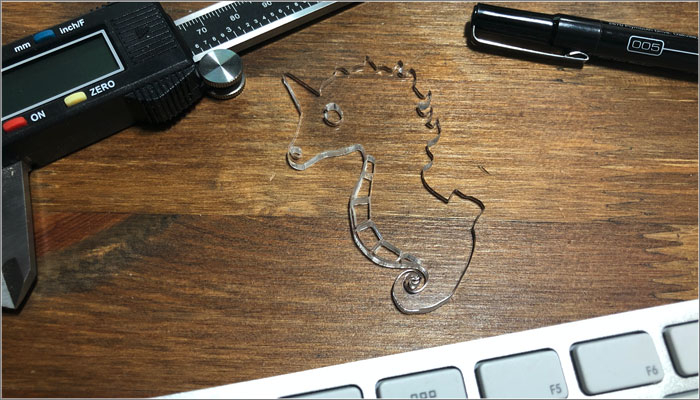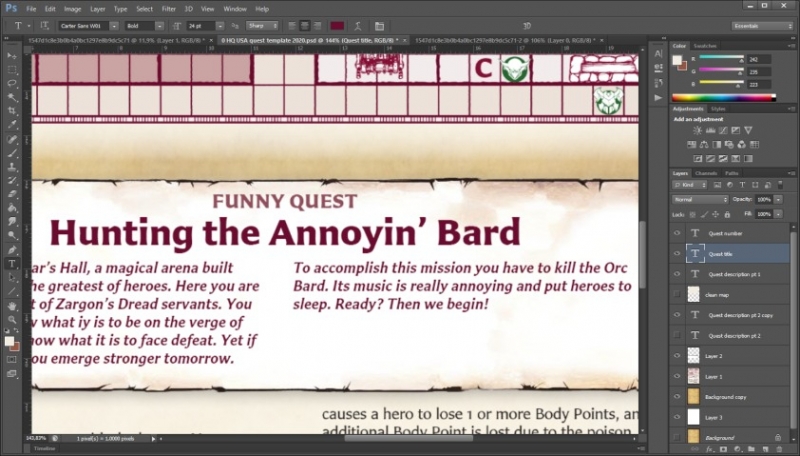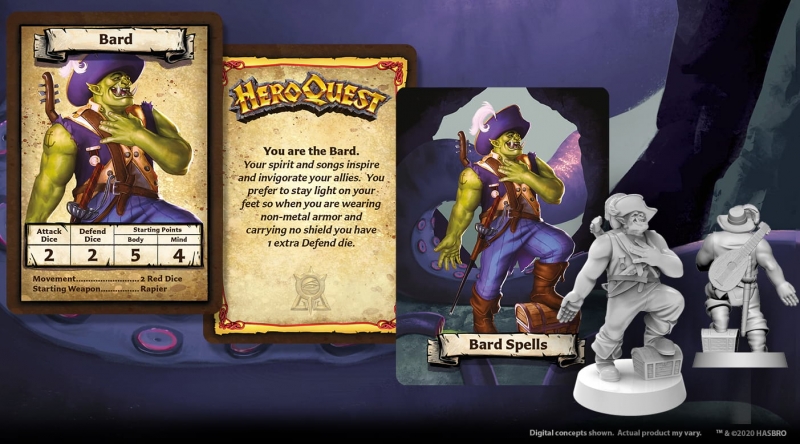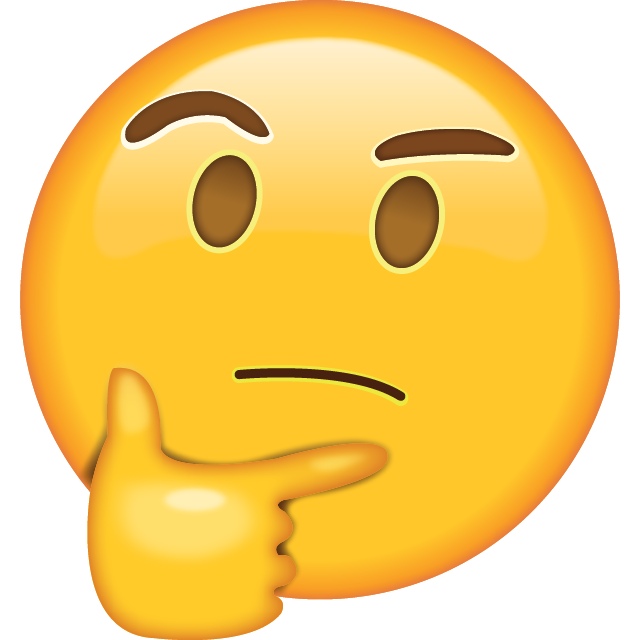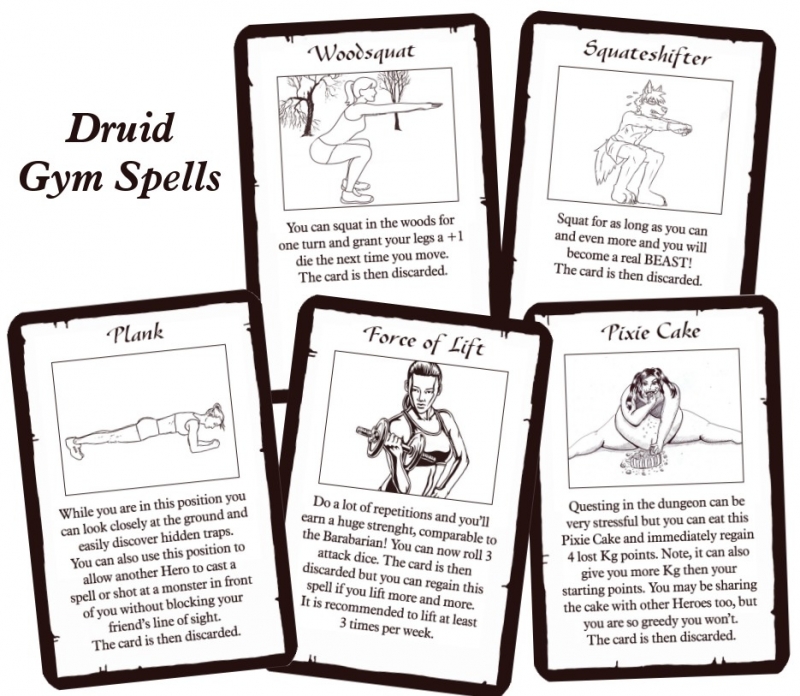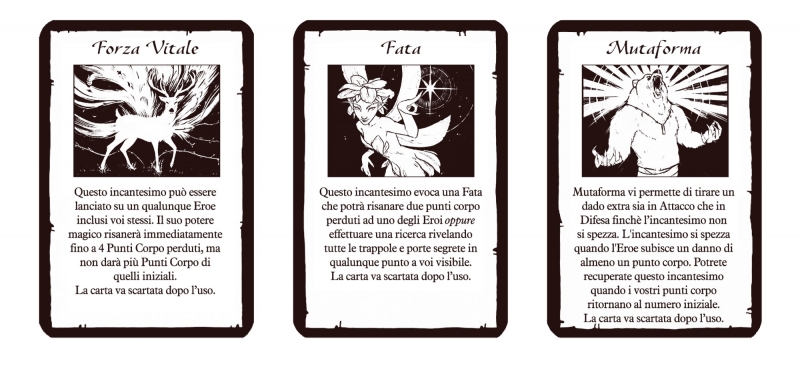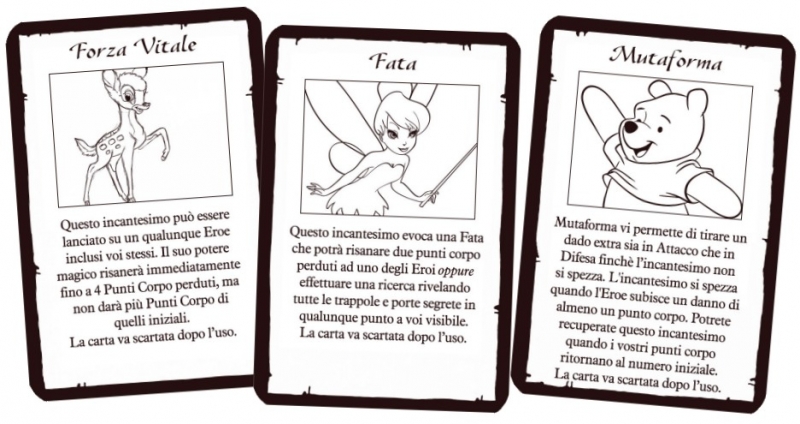-
Numero contenuti
2549 -
Iscritto
-
Ultima visita
-
Giorni Vinti
346
Tipo di contenuto
Forum
Download
Heroquest News
Tutti i contenuti di lestodante
-
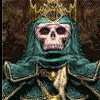
in corso Nuovi Bastoni Magici (Fenice, Mare, Vento e Pietra)
lestodante ha risposto a lestodante nella discussione Carte
Questo è un piccolo extra in aggiunta ai bastoni. Come la Gemma di Telor, anche l'Anello del Caos può essere usato da qualunque personaggio in quanto il potere è limitato e non si può usare sempre. Ho preso ispirazione dall'Anello del Caos di Warhammer Quest. Sono indeciso se dare una penalità di -1 PC iniziale (risanabile, come se l'eroe avesse subito una ferita ad ogni nuova impresa) per chi indossa l'anello oppure lasciare la penalità di dover spendere 1 PM ogni volta che si usa un incantesimo contenuto nell'anello. E' come Spell Ring che contiene al suo interno un incantesimo ma questo ne può contenere fino a tre ed esclusivamente del Caos e pescati a caso dal mazzo. Inoltre gli incantesimi usati non si ripristinano ad ogni nuova quest ma solo se l'anello si è ricaricato e questo succede occasionalmente. Sulla carta come al solito ho dovuto fare i conti con lo spazio per la descrizione che spero sia sufficientemente esaustiva. In pratica quando si trova l'anello si avrà solo un incantesimo del caos disponibile, da pescare a caso dal mazzo. All'inizio di ogni Impresa l'eroe che lo indossa lancia un dado da combattimento e se ottiene uno scudo nero l'anello ha ricaricato il potere e può essere pescato un'altro incantesimo del Caos . Se l'eroe non aveva ancora usato l'incantesimo già contenuto nell'anello adesso avrà due incantesimi nell'anello e non solo uno. Andando avanti tra le varie imprese, gli incantesimi non usati restano a disposizione dell'eroe, fino a un massimo di tre (eventualmente si potrebbe anche aumentare il limite). Se invece li ha utilizzati potrebbe capitare di affrontare una o più imprese con l'anello scarico e dover attendere finchè non si ricarica per poterlo usare nuovamente.- 44 risposte
-
- carte
- incantesimi
-
(and 3 più)
Taggato come:
-

remake HeroQuest: The Quest is Calling (by Hasbro & Avalon Hill)
lestodante ha risposto a jojo nella discussione Il nuovo HeroQuest - Avalon Hill
Anche secondo me, trattandosi di miniature promozionali potevano sforzarsi un po di più con la pittura. Sembrano colori basici. Inoltre potevano inviare due miniature diverse... Comunque entrambi i tipi prendo a schiaffi la scatola e la squotono come se fosse un cartone delle uova vuoto. Tra tanti anni quella scatola potrebbe avere un suo valore, farebbero bene a trattarla meglio.- 408 risposte
-
- game system
- hasbro
-
(and 1 più)
Taggato come:
-

remake HeroQuest: The Quest is Calling (by Hasbro & Avalon Hill)
lestodante ha risposto a jojo nella discussione Il nuovo HeroQuest - Avalon Hill
Due YouTuber hanno ricevuto un paccheto da Hasbro con la richiesta di specificare che è un regalo e recensirlo. Il pacchetto ha il design della nuova scatola, dentro c'è una tomba stampata un po più grande che contiene 4 dadi e il nano dipinto. Trovate i due video qui sotto. Inoltre su Twitter hanno messo un post apposito per domande e risposte da parte dei fan.- 408 risposte
-
- game system
- hasbro
-
(and 1 più)
Taggato come:
-

Cura e conservazione delle carte
lestodante ha risposto a lestodante nella discussione Riparazione, Manutenzione e Restauro
Ho riscontrato che le foderine hanno già 1 mm in più (per la chiusura dei bordi) per cui devi prendere quelle specifiche e ci vanno precise. Sul sito Mayday trovi tutti i formati disponibili. Poi puoi acquistarle anche su eBay o Amazon, dove trovi l'offerta migliore (euro più/euro meno). -

in corso WIP: Carte Abilità + Abilità Magiche
lestodante ha risposto a lestodante nella discussione Carte
Ancora un aggiornamento!! Ecco tre carte con abilità difensive e tre abilità magiche. Vi avevo già mostrato Aura di Fuoco e Aura d'Aria, adesso è il turno di Acqua e Terra. Infine, una bozza in stato avanzato per il dorso delle "Abilità Eroiche". (Disegni by Alberto Macari, Laszlo Seber e Luis Octavio)- 50 risposte
-
- abilità
- bonus e malus
-
(and 2 più)
Taggato come:
-

Cura e conservazione delle carte
lestodante ha risposto a lestodante nella discussione Riparazione, Manutenzione e Restauro
Vi posto il formato di foderine che uso per le carte piccole delle due espansioni americane, Kellar's Keep e Witch Lord. Sono quelle che si tagliano dal retro del questbook e disponibili solo nella versione USA di queste due espansioni. Il formato è 43x65, le trovate anche cercando "mayday mini chimera". Anche per queste raccomando la versione premium, 125% più spesse e più rigide delle normali. -

remake Intervista a Stephen Baker by Mojo Nation (Ottobre 2020)
lestodante ha pubblicato una discussione in Il nuovo HeroQuest - Avalon Hill
Intervista a Stephen Baker pubblicata su Mojo Nation qualche giorno fa: https://mojo-nation.com/heroquest-inventor-stephen-baker-creative-process-designing-legendary-game-upcoming-revival/ Di seguito riporto il testo intero per evitare di perderla qualora venisse in futuro cancellata dal sito Mojo Nation. HeroQuest inventor Stephen Baker on his creative process, designing the legendary game… And its upcoming revival (19th October 2020 by Deej Johnson) Few games are as beloved as the 1988 classic, HeroQuest. We caught up with the HeroQuest hero himself, inventor Stephen Baker. Here he tells us about his creative process, designing the game… And its 2020 revival. Stephen Baker! Pleasure to catch up; thank you for making time. Let’s start on the obvious place… How did you get into the games industry? My lifelong passions developed early on. As a boy I was keen on history, modelling and games. I would make model tanks, planes, and paint plastic soldiers. My friends and I would play simple stand ’em up, knock ’em down type games. Just with the models; no dice or cards or anything? No, not at first! However, this damaged the models and chipped off the paint. So I soon made up some rules. These were all very basic and included cardboard templates for movement, and simple dice rolls for shooting. My dad then found a book at the library called The War Game by Charles Grant. That book, which I still have, changed everything. It was 1973 and I was nine years old. I know The War Game was something of a bible back then. What was it, exactly? Not just a set of rules I understand? No, The War Game wasn’t just a set of rules! It provided a high-level overview for warfare in the eighteenth century. Grant then shared his thought process and method. He outlined how to convert the realities of troop organization, troop manoeuvres and rate of fire into game rules based on ground scale, troop ratios and the time each turn represented. So it’s really how to play war games based on historic principles? Exactly. And the idea you could take something real and interpret a representative play experience like that fascinated me… I began designing games for other time periods, and for sports – anything that interested me. And this held your interest throughout your teens, too? Absolutely. Later, when I left college, I went to work in a bank. However, at the weekends I worked at the London Games Workshop store in Dalling Road. Oh, wow. The very-first store? Kudos! When the opportunity came to become full time, I jumped at it… Much to the concern of some friends and family! But things worked out; I quickly became the manager. One day, I was contacted by someone from Milton Bradley. They were looking for some game pieces. As we talked further, they asked if I’d be interested in doing some playtesting for them. I took a few days off and spent three days playing games and writing reports. On the final day, they asked if I wanted to join as an Associate Games Designer. Of course, I said yes. That’s a heck of a story! And you sound very energised by it; very passionate. Let me ask you this: of which work are you most proud? I don’t know that there’s a single product or project that I’m most proud of. What does give me a great sense of pride is what I do; what we all do in this industry… We make smiles. We craft fun that brings people together. Deliver experiences that will be remembered. We enable people to explore, to create and to imagine through play. I love being part of an industry that puts more smiles into the world than we take out of it. We’re a positive influence. Fantastic! I think that’s a difficult question; you’ve breezed it! So… Okay. You’re probably best-known for the game HeroQuest. It’s Milton Bradley’s approach to Dungeons and Dragons, working with Games Workshop. For those that don’t know it, can you give us some background? Sure! My initial vision for HeroQuest was “role-playing in a box”. It’s still the way I describe it to people today. The goal was to give players who’d never experienced role-playing their first taste of adventure gaming. Which is more or less how I’d describe it; a gateway to that style of game… Right. So I wanted to simulate all the attributes of a role-playing game. I wanted to provide miniatures and 3D dungeon terrain. Just as I was inspired as a boy by images of grand wargame tables, beautiful terrain and large, painted armies, I wanted the game to be a spectacle. I wanted maximum visual appeal that would inspire people to want to play. And what was your biggest challenge working on the original? Managing cost and keeping it simple! As an example, the early versions of the game had room and corridor tiles. That seemed the obvious way to go. It gave maximum flexibility for quest layouts. However, when I play tested with kids it was just too much. Given all the pieces, it took too long to reveal what was round the next corner, and it was too easy to make a mistake and place the wrong tile. Okay… That’s when I decided to have a set gameboard. People understand a gameboard; it felt more familiar and took away a lot of time trying to find the right tile. Every quest was now the same template. This was easier to manage in the page layout for quests. It was much faster to set up the board as the players journeyed through the game. Which is interesting to me; the idea of a welcome solution hiding in a limitation… Well, likewise, I’d originally planned a three-panel gameboard. I had it similar in size to the old Gamemaster games like Axis & Allies. Unfortunately, I had to reduce this to a standard two-panel board for cost reasons. No point having a huge dungeon if you can’t afford monsters to put in it! And with each iteration of the game, I simplified it more. I wanted maximum experience for the least number of rules. You might be interested to know that – in a recent set of Mojo Nation interviews – two out of four guests picked HeroQuest as the game they’d most want with them on a desert island! Do you get that sort of thing a lot? Happily, I’ve had many people over the years reach out to me to say how much they loved playing HeroQuest when they were younger! People often tell me it was the game that got them into role-playing, or the game that made gaming their hobby. Given the colourful look of the overall game, many people were inspired to paint the miniatures, so for some this was also the game that inspired them to get in to miniature gaming. And if you had to guess, why, do you think, it’s so beloved? I guess it was the first game of its kind, and unlike anything that was on the market at the time. It was like a miniature stage on which the players own adventure story would be told. In the simplest way possible, it delivered narrative, characters, adventure, tricks and surprises. It was an uncomplicated contest between the heroes and the monsters. This was all a new and unique experience for many kids and their families. I think this is why it remains such a treasured memory for so many. Dare I ask… How does it feel to see HeroQuest coming back? It’s a little surreal. I first started designing the game in 1988. It’s definitely the game people talk to me about the most. Hasbro contacted me earlier this year and asked if I’d be interested in writing a bonus Quest Book. I was delighted to hear they were bringing the game back, and honoured to have the opportunity to play a small role in its relaunch. Going back through the rules and all the past quest materials certainly brought back a lot of memories. And what was your biggest challenge working on the new version? I don’t think it was a challenge! I had some homework to do. It had been quite a few years since I’d really familiarised myself with all the game elements. What was notably different is the means by which I created the Quest Book. When I was designing my first quests – 30-odd years ago – everything was pen and paper. I literally wrote out the materials… Oh, my! I hadn’t thought, but yes; this was before desktop publishing?! Yes! So I cut and pasted photocopies of hand-drawn symbols onto printed board templates. Making things larger or smaller was done through percentage changes at the copier. It was definitely old school! Amazing, though… Fast forward to today, and I can create a finished Quest Book that looks no different than the originals. However, while the tools have changed, the process remained the same. I scoped out a rough story. Broke it down into chapters and used these as the script for each quest. I challenged myself to use the board in some new and different ways. I planned how I’d add those surprise moments for the heroes… I wanted returning players to experience once again the heroes’ shared, excited reaction as they opened the door and found what lay beyond. HeroQuest aside, in which other games have you had a hand? I’ve worked on many games over the years. I spent 26 years at Hasbro over a 35-year period… 17 of those were spent as part of the Games team, first in Europe and later the US. During that time, I worked on just about every Hasbro game brand. But you’re not at Hasbro now? No. I left Hasbro in September 2019; since then I’ve been partnering a number of other designers and inventors around the world. I also do a little freelance game design and consulting. Terrific! Hey, feel free to give yourself a proper plug. Some of my articles attract upwards of a dozen views… Well, if any of your dozen readers are interested, they’re welcome to contact me at stephen@stephenbakerdesign.com, or find me on LinkedIn. I enjoy meeting and working with new folk, and am always happy to talk about games. You say that… Perhaps I should’ve warned you, eight of those people are loons! Let me ask you this, though: in terms of your creative process, how do you generate ideas? How do you develop them? I use a number of different methods. Even when working alone, there needs to be some process. I like to create a bunch of high-level ideas. These are not full concepts. It’s a name with a few lines to describe the essence of the experience, along with a sketch or two. Very rough thumbnails. Without any filtering, presumably? No, at this stage I don’t judge; I’m just trying to create a bunch of ideas.The goal is to capture an idea quickly in a way that allows me to return to it later. Then I filter. Here I’m looking to find the ideas that seem to have the most value… Sometimes ideas merge or morph into something a little different. I’m also doing some light research to make sure an idea is sufficiently unique. And what happens next? Presumably you pick some ideas over others? Yes. Once selected, I add ideas to my active-project list and plan how much development time to invest in getting a first prototype. I like to have structure to my week, and find it’s important to set myself targets and dates. That all being said, there are also days when a thought pops into my head over morning coffee. The rest of the day is then a frenzied pursuit of that idea! Forced into a cul-de-sac of immodesty, what one piece of advice would you give other designers? A game is only as good as the players say it is. Playtest, and listen to feedback. We touched on this earlier: sometimes the thing that needs to go is the thing you like the most. Don’t be too precious with your ideas! Right. It’s only very-new or very-doomed inventors, I think, that absolutely cleave to one idea… I always say, “Anything is possible, everything is not.” Early on, as your idea takes form, make sure you have a clear sense of who you’re designing for, what you imagine the likely play scenario to be, and the attributes of the experience you’re trying to create for your audience. If you’re just adding clay and you haven’t formed the underlying wire armature, the end may not live up to your expectations – or those of your players. Great analogy! Love the saying, too. And finally, I would say don’t worry if early playtests don’t work well. You have to get it wrong before you get it right. Excellent! This has been very insightful, Stephen, and I’ve taken a lot of your time so we should probably wrap this up… I’m curious, though, what question have you never been asked in an interview that might be fun to answer? And what is the answer? The question would be… “If you could meet anyone past present or future who would you like to meet?” Now, people who know me would say my answer would surely be Napoleon. But it’s not. My answer would be Charles Grant. It would be cool to let him know how much his books inspired me. Cooler still to stand across the table and refight one of his classic battles. Great answer… Finally, then, what’s the most interesting thing on your desk? It’s an interesting question. As I looked around for an answer, I saw a small clear acrylic seahorse. It is a simple design, one that my youngest daughter drew. I then converted the linework into a PDF and laser cut the image. She was thrilled to see her creative work materialise into a tactile, tangible object. I equipped a small studio when I set up my company. I have a large-format printer, 3D printer and laser cutter. As designers, we often take all the maker technology for granted. But for kids, it’s still a source of great wonder. Again, you sound very passionate; I hope it comes across to those twelve readers! Any last thoughts for them? The world of gaming has never been stronger. There are more games being created and more games being played by more people than ever before. Some of these players will be inspired to design their own. I encourage them to do so. Become a smile maker.-
- game system
- heroquest
-
(and 3 più)
Taggato come:
-

remake HeroQuest: The Quest is Calling (by Hasbro & Avalon Hill)
lestodante ha risposto a jojo nella discussione Il nuovo HeroQuest - Avalon Hill
Ma questa associazione Orchi-Funghi l'ho letta anche altrove, ma da dove proviene?- 408 risposte
-
- game system
- hasbro
-
(and 1 più)
Taggato come:
-

artwork HeroQuest Artist Spotlight: Max Dunbar
lestodante ha risposto a Flash nella discussione Il nuovo HeroQuest - Avalon Hill
Si, anche a me non dispiacciono graficamente (a parte lo stile dell'elfa ma è proprio il design del personaggio). Nell'ordine sono: Infuso Eroico - tesoro Spadone - equipaggiamento Coraggio - incantesimo di Fuoco Pozione (Risanante? Del Recupero?) - tesoro Lo Stregone non so... ma quella accanto a matita è il Barbaro in Paura - incantesimo del Caos Lama degli Spiriti - artefatto Bastone del Mago - artefatto- 6 risposte
-
- game system
- hasbro
-
(and 3 più)
Taggato come:
-
Ciao @Ikaruga Anthony e benvenuto anche da parte mia! Davvero complimenti per le miniature, mi piacciono tantissimo, sia lo stile con cui le hai dipinte sia le modifiche fatte. Il barbaro sembra proprio un altro personaggio, l'elfo un po' ringiovanito, nel volto sembra anche un po stile manga. Quindi ti iscrivi solo adesso e per tutti questi anni ci hai tenuto nascoste le tue miniature? Attendo anche io di vedere altre foto e intanto ancora complimenti!
-

in corso Warlock Hero (by Shauna Nakasone) - Eroe Stregone
lestodante ha risposto a lestodante nella discussione Personaggi
Devo dire che a rieggere il primo post di @Zacaros potrebbe sembrare che qualcuno della Hasbro sia passato di qui per prendere spunto sul Warlock!! Incantesimi interessanti.- 16 risposte
-
- game system
- heroquest avalon hill
-
(and 3 più)
Taggato come:
-

remake E' uscita la training quest Rogar's Hall di Stephen Baker!
lestodante ha risposto a Chainer nella discussione Il nuovo HeroQuest - Avalon Hill
Comunque la G l'avrei messa dal lato interno alla stanza perchè se uno cerca passaggi segreti appena inizia la quest un master un po' distratto potrebbe non accorgersi che la G è condivisa tra corridoio e stanza centrale e finisce che ti piazza il tassello con la porta nascosta.- 23 risposte
-
- game system
- heroquest avalon hill
-
(and 3 più)
Taggato come:
-

Mutant Chronicles Warzone (Prima edizione) - Galleria Miniature
lestodante ha risposto a Katsuhiko JiNNai nella discussione Proposte
Bellissime. Poi l'ambientazione di queste miniature lascia spazio a tante idee. -

in corso Raziel - Mietitore d'anime, Legacy of Kain/Soul Reaver
lestodante ha risposto a Kull1992 nella discussione Personaggi
Anche secondo me è un po troppo forte. Tu di solito sei giocatore o master? Quando si crea un personaggio sarebbe buona norma provare a immaginare non quanto sarebbe bello usarlo con tutti i suoi bei poteri bensì quanto sarebbe frustrante per te (master) giocare contro un personaggio così potente? -

remake E' uscita la training quest Rogar's Hall di Stephen Baker!
lestodante ha risposto a Chainer nella discussione Il nuovo HeroQuest - Avalon Hill
Anche io ho pensato che sia il passaggio della porta centrale. E' l'unico che è posizionato accanto a un corridoio e le note spiegano proprio che il passaggio può essere trovato solo se si cerca dal lato del corridoio. Comunque stavo lavorando al template, così chi vuole può creare avventure con questo nuovo stile. In questa impresa ci sono praticamente tutte le icone del set base...😉- 23 risposte
-
- game system
- heroquest avalon hill
-
(and 3 più)
Taggato come:
-

in corso Nuovi Bastoni Magici (Fenice, Mare, Vento e Pietra)
lestodante ha risposto a lestodante nella discussione Carte
Ho specificato che la gemma dona un punto mente a chiunque la indossi. Questo fa sì che possa anche essere indossata da un altro eroe che normalmente non sia in grado di lanciare incantesimi ma che potrà beneficiare del punto mente extra. Dite che va bene se il potere di non scartare un incantesimo si applica anche ad una pergamena magica? Ad esempio il Nano che indossa la Gemma di Telor potrebbe usare una pergamena magica senza doverla scartare (al costo però di 2 punti mente) e quindi riutilizzarla una seconda volta. Ovviamente non avrà gli incantesimi di Rivelazione a sua disposizione.- 44 risposte
-
- carte
- incantesimi
-
(and 3 più)
Taggato come:
-
-

in corso Warlock Hero (by Shauna Nakasone) - Eroe Stregone
lestodante ha risposto a lestodante nella discussione Personaggi
@Ogre Ribelle se clicchi sull'immagine si aprono ad alta risoluzione (ci devi cliccare una seconda volta). Forse il sito le fa leggermente più piccole rispetto al file che ho caricato io.- 16 risposte
-
- game system
- heroquest avalon hill
-
(and 3 più)
Taggato come:
-

in corso Druid Hero (by Nikki Dawes) - La Druida
lestodante ha risposto a lestodante nella discussione Personaggi
@Ogre Ribelle intendi queste stile Disney? Clicca qui: Carte Disney Druida- 11 risposte
-

heroquest avalon hill I nuovi personaggi inediti
lestodante ha risposto a lestodante nella discussione Il nuovo HeroQuest - Avalon Hill
Rivelati i dettagli sull'arma e sugli incantesimi dell'orcobardo: Inspiring Tale dà +1 in attacco ad un ALTRO eroe. Healing Song risana 2 punti corpo all'orcobardo e a tutti gli eroi che vede in quel momento. Lullaby è l'equivalente di Sonno (che tristezza). L'arma unica per l'orcobardo è l'equivalente di uno spadino (2 dadi attacco + attacco in diagonale). The Bard’s Unique Weapon • Rapier This long slender sword allows you to roll 2 Attack dice and may be used to attack diagonally. May not be used by the wizard. 250 gold coins This weapon allows our Bard to attack diagonally from the start of the game. For me this highlights the character’s resourcefulness and allows them to contribute in battle in a crafty manner. The Bard’s three spells: • Inspiring Tale This spell may be cast on any one Hero, excluding yourself. The next time that Hero attacks, they may roll one extra combat die. Regain this spell when any Hero you can “see,” excluding yourself, rolls two white shields when rolling Defend dice. • HealingSong You and each hero you can “see” each restore up to two Body points that have been lost but does not give a hero more than their starting number. • Lullaby This spell puts one enemy into a deep sleep so they cannot move, attack, or defend themselves. The spell can be broken at once or on a future turn by the enemy rolling one red die for each of their Mind points. If a 6 is rolled the spell is broken. May not be used against Mummies, Zombies, or Skeletons.- 32 risposte
-
- eroi
- game system
-
(and 3 più)
Taggato come:
-

Cura e conservazione delle carte
lestodante ha risposto a lestodante nella discussione Riparazione, Manutenzione e Restauro
@Fenix io le ho pagate circa uno o due dollari a pacchetto. Le ho prese su ebay ma le vidi anche su Amazon. -

heroquest avalon hill I nuovi personaggi inediti
lestodante ha risposto a lestodante nella discussione Il nuovo HeroQuest - Avalon Hill
@Stefano Fagioli la storia dell'infiltrato era ovviamente una battuta e le carte palesemente ironiche e finte, realizzate da me per ironizzare sulla vecchia e tanto discussa versione della Druida che aveva abiti da palestra e perchè l'autrice ha esplicitamente dichiarato: "I also wanted to keep her clothing simple and something that she could quickly move around in, so I actually based her simple leather top and bottoms on gym clothes" (volevo mantenere il suo abbigliamento semplice e qualcosa con cui possa muoversi agilmente per cui mi sono ispirata ad abiti da palestra). In ogni caso per rispondere alle tue domande si possono solo fare ipotesi... - 1) credo che saranno leggermente più alte delle nostre, circa 32-35 millimetri, oppure se le faranno di 28 mm avranno parti molto più sottili; - 2) a vedere le miniature credo che saranno realizzate in più parti da assemblare. Puo darsi che arrivino già preassemblate e preincollate oppure che dovrà farlo l'acquirente. - 3) i colori diversi li chiedono in tanti, può darsi che ascoltino le richieste ma al momento non si sa nulla. Tutte le foto viste finora mostrano solo dei rendering (immagini 3D), solo dei mobili si è vista una foto dell'oggeto realmente stampato e dipinto.- 32 risposte
-
- eroi
- game system
-
(and 3 più)
Taggato come:
-

heroquest avalon hill I nuovi personaggi inediti
lestodante ha risposto a lestodante nella discussione Il nuovo HeroQuest - Avalon Hill
Sembrerebbe che avessero altri incantesimi in serbo per la druida prima del restyling floreale ma che poi siano stati cambiati in favore di questi altri tre. Tramite un amico che lavora nei servizi segreti sono riuscito ad avere in anteprima assoluta le immagini di queste carte (solo in inglese purtroppo). Mi raccomando, tenetele per voi, è materiale TOP-SECRET!!!- 32 risposte
-
- eroi
- game system
-
(and 3 più)
Taggato come:
-
@andrea_vitale ti sei registrato su tutti i forum per trovare la soluzione all'indovinello?
-

in corso Druid Hero (by Nikki Dawes) - La Druida
lestodante ha risposto a lestodante nella discussione Personaggi
Ed ecco pronte le carte in italiano per chi volesse testare il personaggio! Considerati i soggetti mi son divertito anche a farne una variante...- 11 risposte

